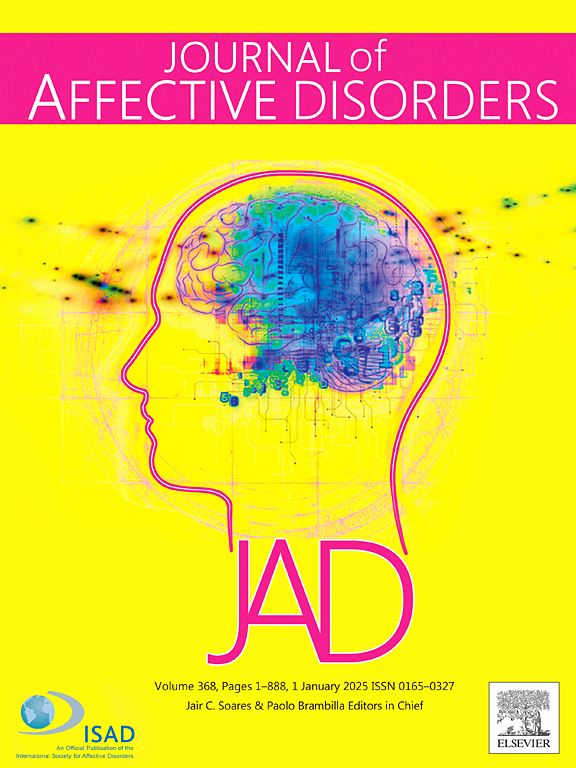Long-term exposure therapy outcome in phobia and the link with behavioral and neural indices of extinction learning
IF 4.9
2区 医学
Q1 CLINICAL NEUROLOGY
引用次数: 0
Abstract
Extinction learning is regarded as a core mechanism underlying exposure therapy. Under this assumption, studies have looked at the predictive value of the extinction learning paradigm for exposure therapy outcomes. However, predicting factors of long-term exposure therapy success have not been established. Participants with a specific phobia (SP) for spiders were included in a double-blind randomized controlled trial. Participants were randomly assigned to receive exposure therapy (n = 25, 24 females) or an active control intervention, progressive muscle relaxation (PMR; n = 18, 15 females). Symptom levels were measured with the Fear of Spiders questionnaire (FSQ) at baseline (T0), after the intervention (T1), and at six- (T2) and twelve (T3) months follow-up. At baseline, participants completed a three-day fMRI fear conditioning, extinction learning, and extinction recall paradigm. Indices of extinction were defined as self-reported threat expectancy and fear, and neural activation during stimulus presentations and threat omission in the ventromedial prefrontal cortex and nucleus accumbens, based on prior data. Mixed model analysis revealed that the exposure therapy group had an overall stronger decrease in phobic symptoms over time than the PMR group (β = 10.95, p < .001). However, none of the indices of extinction learning were predictive for FSQ scores after exposure therapy at the longest follow-up measurement (T3). In sum, the current results show the long-term effectiveness of a single session of exposure therapy for reducing a specific fear of spiders but no baseline characteristics were identified that predicted individual differences in exposure therapy success after one year.
求助全文
约1分钟内获得全文
求助全文
来源期刊

Journal of affective disorders
医学-精神病学
CiteScore
10.90
自引率
6.10%
发文量
1319
审稿时长
9.3 weeks
期刊介绍:
The Journal of Affective Disorders publishes papers concerned with affective disorders in the widest sense: depression, mania, mood spectrum, emotions and personality, anxiety and stress. It is interdisciplinary and aims to bring together different approaches for a diverse readership. Top quality papers will be accepted dealing with any aspect of affective disorders, including neuroimaging, cognitive neurosciences, genetics, molecular biology, experimental and clinical neurosciences, pharmacology, neuroimmunoendocrinology, intervention and treatment trials.
 求助内容:
求助内容: 应助结果提醒方式:
应助结果提醒方式:


